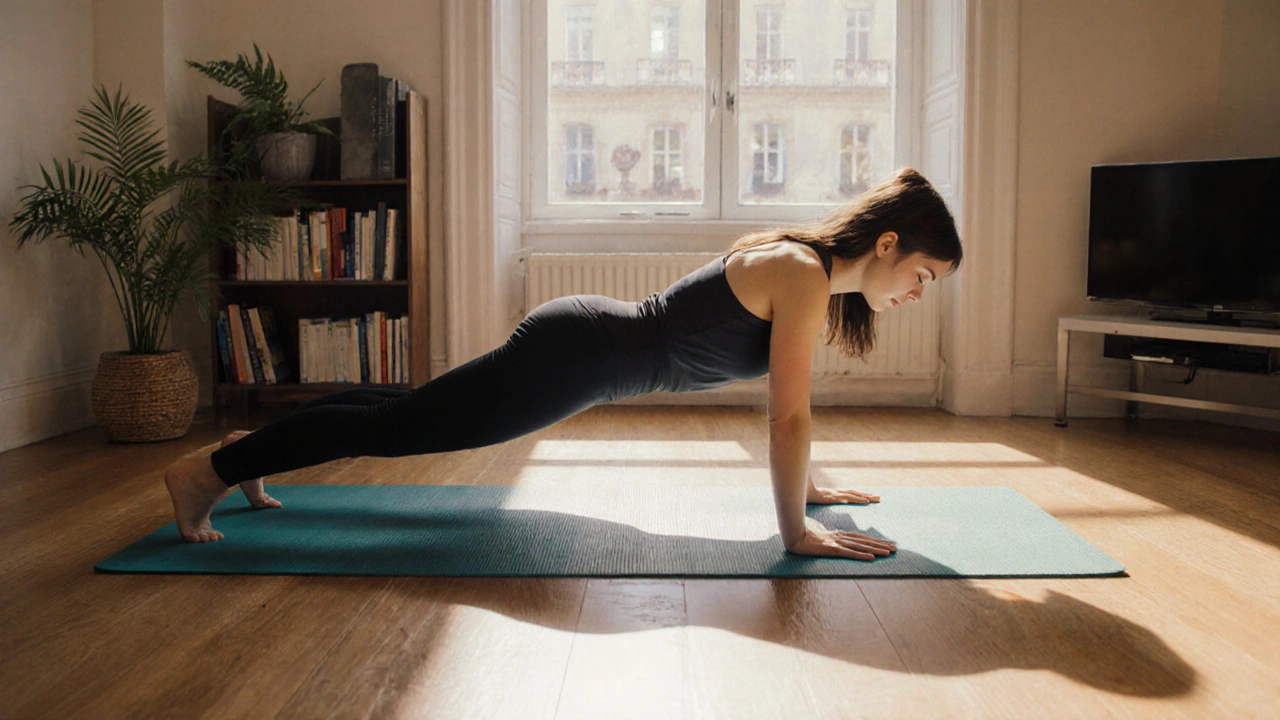Core Strength: Simple Steps to a Stronger Midsection
When you hear “core,” most people picture six‑pack abs. The truth is, a solid core is the foundation for almost every movement you do – from lifting groceries to running a marathon. Strengthening the muscles around your belly, hips, and lower back can protect your spine, improve balance, and make everyday tasks feel easier.
Why Core Strength Matters
A strong core stabilizes your spine. That means less wobble when you sit, stand, or reach for something high. It also helps you generate power for sports, whether you’re swinging a bat or sprinting on a track. When your core works well, you’ll notice fewer aches in your lower back and better posture during long hours at a desk.
Three Core Moves You Can Do Anywhere
1. Plank (forearm or straight‑arm) – Get into a push‑up position, keep your body in a straight line, and hold for 20‑30 seconds. Focus on pulling your belly button toward your spine. If 30 seconds feels easy, add five‑second increments.
2. Bird‑Dog – Start on hands and knees. Extend one arm forward and the opposite leg straight back, keeping your hips level. Hold for a couple of seconds, then switch sides. This move trains the deep stabilizers that keep your lower back safe.
3. Dead Bug – Lie on your back, arms pointing to the ceiling, knees bent at 90 degrees. Lower one arm behind you while straightening the opposite leg, then return to start and repeat on the other side. Keep your lower back pressed into the floor the whole time.
Do each exercise for three sets. Even a short 10‑minute routine done three times a week can make a noticeable difference.
Everyday Habits That Boost Core Health
Beyond formal workouts, small changes add up. Sit tall: pull your shoulders back and engage your belly muscles while typing. When you stand, shift your weight from side to side gently – a tiny core activation that builds endurance. While lifting, brace your core as if you’re about to be punched in the stomach; this protects your back and teaches proper technique.
Breathing matters too. Practice diaphragmatic breathing – inhale deep into your belly, let it rise, then exhale fully. This train the transverse abdominis, the deepest core muscle that acts like a natural corset.
Progression Tips
Once the basic moves feel easy, increase the challenge. Add a weight plate to your plank, or perform the bird‑dog with a light dumbbell. Try side planks to target the obliques, or incorporate Russian twists for rotational strength. Keep a quick log of reps and hold times so you can see progress over weeks.
If you ever feel sharp pain in your back or neck, stop the exercise and check your form. Small adjustments, like aligning your shoulders over elbows in a plank, often fix the issue.
Conclusion: Consistency Over Perfection
Core strength isn’t a one‑time fix; it’s a habit. Pick a time that works for you – morning, lunch break, or after dinner – and stick with it. Over time you’ll notice better posture, less back strain, and a feeling of steadiness that spills into every part of life.
Ready to give your core a boost? Start the three moves today, add a few habit tweaks, and watch your strength grow without a fancy gym membership.
Core Strength for Back Pain Prevention & Relief
Learn how core strength stabilizes the lumbar spine, discover effective exercises, avoid common mistakes, and get a 4‑week plan to prevent and ease back pain.
